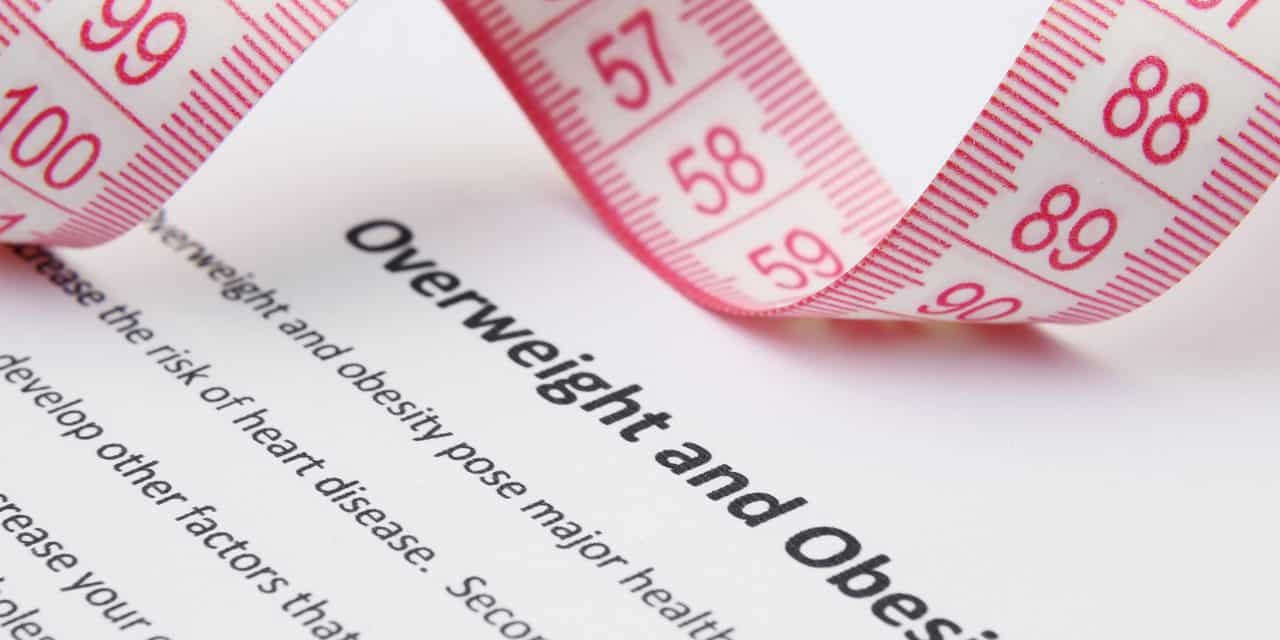
Weight Loss Secrets – for Spinal Health, Pain Reduction, and Disease Prevention

This article will outline how to deal more effectively with the obese population in your practice. This is a relevant issue because, in recent years, research has revealed that obesity promotes most chronic diseases, including musculoskeletal pain. Obesity is a menace to society. Especially relevant to chiropractic practice, overweight and obese individuals are more likely to have back pain, disc herniation, osteoarthritis, tendinosis, widespread pain, and headaches.
Obesity
In the clinical setting, it is readily obvious that many obese patients respond successfully to the various treatments utilized by chiropractic physicians. However, when the chronic inflammation of obesity is present and is the primary cause of musculoskeletal pain, chiropractic care is less effective. These patients need to lose weight and maintain a healthy weight in order to be responsive to chiropractic care and have a chance of becoming pain-free.
Consider another scenario. Not all obese patients are depressed; however, obesity increases a patient’s risk for developing depression, which is known to be a promoter and perpetuator of chronic pain. Perhaps in up to 10% or more of your obese patients, their obesity is the underlying cause of both their musculoskeletal pain and depression.
Lifestyle Management
If you examine the patient population in your practice, you will identify that the more needy and non-responding patients tend to be obese. A challenge in clinical practice, whether it be in chiropractic, medicine, or physical therapy, is dealing with obese patients. This is because lifestyle management can be time-consuming and complicated, which is why weight management is typically not part of the average practice.
The primary mistake made in the clinical setting is promoting the notion that certain foods promote weight loss. It is much more accurate and far easier to help patients lose weight if they do not feel the pressure to eat a specific diet, which contains foods that they do not like or are unfamiliar to them. In fact, weight loss and proper weight management is more a mental battle, rather than a food issue.
The Obesogenic Environment
As I have written in other publications, we need to first explore why we are an obese population and what we can do about it, no matter which foods or ethnic style of meal preparation one may favor. The first fact to understand is that we now live in what is called the “obesogenic environment,” which is endlessly promoted by print, radio, television and internet advertisers. The obesogenic environment is quite problematic because we have a natural, and a very exploitable, drive to eat for survival, which is augmented by stress, a lack of sleep, and sedentary living.
As we overeat refined sugar, flour, and oils, the composition of our gut flora changes. For example, the firmicutes bacterial population overgrows, and it is these bacteria that are most efficient at harvesting calories from the food we eat.
As body fat accumulates and body weight increases, the bodyweight setpoint is reset to a higher and higher level. The brain actually undergoes pro-inflammatory physiologic changes that resist weight loss. If someone does lose weight, the brain promotes weight gain back to the original or an even higher body weight.
It is no secret that most people who lose weight end up regaining it within a year. It appears that the reason for this involves the many non-food related factors mentioned above. The remainder of this article briefly discusses these factors in the context of three action steps, which are easy for patients to do if they are willing.
Step 1 involves a simple clinical measurement.
The easiest way to engage weight management is to involve a simple goal that is not related to weight itself. Virtually no one is overfat if they have a normal waist/hip ratio, which should be less than .8 for women and .95 for men. You can track ratio changes in the patient file and patients can measure it on their own as part of their weight management goal.
Step 2 requires that patients eat fewer calories, which should not be a surprise.
The easiest way to do this is to reduce, or completely eliminate, the consumption of refined sugar, flour, and oil to create a caloric deficit. Virtually no one in America would be overweight or obese if these calories were not consumed, so they really represent the caloric enemy that must be resisted. As obesity promotes pain expression, the consumption of refined sugar, flour, and oils should be likened to “eating pain.”
Step 3 involves the conscious effort to use our brain more effectively.
Having patients focus on normalizing their waist/hip ratios and conceptualizing that they are actually “eating pain,” will help patients to engage their prefrontal cortex, which is responsible for decision-making and resisting temptation. The prefrontal cortex is also part of the brain that can force us to stay physically active. And it is only through increased physical activity that can we can actually reset the body weight set point to a lower level and make it easier to maintain normal body weight and waist/hip ratio.
As chiropractic physicians, in particular, one of the most effective ways we can help our patients with chronic musculoskeletal pain is to guide them in weight management. Working with patients in the battle against obesity is an excellent step toward reducing the inflammation that is so detrimental to our health.
References
1. Seaman DR. Body mass index and musculoskeletal pain: is there a connection? Chiropractic Man Ther. 2013;21:15.
2. Seaman DR. Weight gain as a consequence of living a modern lifestyle: a discussion of barriers to effective weight control and how to overcome them. J Chiro Humanities. 2013;20(1):27-35.
3. Seaman DR, Palombo AD. An overview of the identification and management of the metabolic syndrome in chiropractic practice. J Chiropr Med. 2014;13(3):210-19.
4. Seaman DR, Cleveland C. Spinal pain syndromes: nociceptive, neuropathic, and psychologic mechanisms. J Manip Physio Ther. 1999; 22:458-72.
5. Seaman DR. The diet-induced pro-inflammatory state: a cause of chronic pain and other degenerative diseases? J Manip Physio Ther. 2002; 25(3):168-79.
Editor’s note:
Dr. Seaman has written a number of published articles, including those cited above that have been referenced by scientists at Harvard Medical School and many other universities in America and abroad. He is also the author of The DeFlame Diet as well as a new book entitled Weight Loss Secrets You Need to Know, based on multiple scientific articles he has written over the years. Dr. Seaman reports that despite his efforts to offer the Kindle version of Weight Loss Secrets You Need to Know free as a public health effort, the book is available for 99 cents on Kindle. The book details Dr. Seaman’s action steps for patients, as well as how to manage weight gain factors for successful weight management.

















